به وبلاگ من خوش آمدید!
قبل از اینکه به محتوا بپردازیم، دوست دارم در پلتفرم های رسانه های اجتماعی من به من بپیوندید، جایی که من بینش های بیشتری را به اشتراک می گذارم، با جامعه ارتباط برقرار می کنم و به روز رسانی ها را پست می کنم. در اینجا نحوه ارتباط با من آمده است:
فیس بوک:https://www.facebook.com/profile.php?id=100066759548969
حالا بیایید سفر خود را با هم شروع کنیم. امیدوارم مطالب اینجا روشنگر، جذاب و ارزشمند باشد.
معرفی
Excavators play a crucial role in the construction, mining, and earthmoving industries, providing the power and versatility needed for a wide range of tasks. With several types of excavators available, understanding which one is right for your project can be challenging. This comprehensive guide aims to provide an in-depth overview of the various types of excavators, their specific uses, and how to choose the best one for your needs.
Excavators come in different sizes and configurations, each designed for specific tasks, from digging and trenching to demolition and material handling. In this blog, we’ll break down the most common types, including mini excavators, crawler excavators, and dragline excavators, among others. We’ll also provide a table comparing their key features, and answer frequently asked questions to help you make an informed decision.
What Are Excavators?

Excavators are heavy-duty machines used to move large amounts of earth or other materials. They consist of a rotating platform, an arm with a bucket, and tracks or wheels for mobility. Excavators are widely used for digging, lifting, demolishing, and dredging operations. The types of excavators vary based on size, mobility, and application, each offering distinct advantages for specific projects.
انواع کاوشگران and Their Uses
Crawler Excavators
One of the most common types of excavators is the crawler excavator, which runs on tracks rather than wheels. Crawler excavators are designed for heavy-duty tasks such as digging trenches, moving earth, and demolishing structures. The tracks allow these machines to operate on uneven or rough terrain, providing stability even in challenging conditions.
Crawler excavators are often used in:
- Large-scale construction projects
- Mining operations
- Road construction
- Forestry
Their versatility makes them a popular choice across various industries.
Mini Excavators
For smaller tasks or projects with limited space, mini excavators are an excellent option. These compact machines are easy to maneuver and can be transported between sites with minimal effort. Mini excavators are used for light excavation tasks such as landscaping, digging trenches for utilities, and residential construction.
Their small footprint allows them to:
- Work in confined spaces
- Cause minimal disruption to the surrounding environment
- Be operated with ease, even by less experienced drivers
Mini excavators are often preferred for projects requiring precision and flexibility in tight areas.
Wheeled Excavators
Unlike crawler excavators, wheeled excavators run on rubber tires rather than tracks. They are designed for speed and mobility, making them ideal for urban construction projects where travel between sites is necessary. Wheeled excavators can operate on paved roads, allowing for faster movement without damaging the surface.
Common applications include:
- Road construction and maintenance
- Utility projects
- Urban demolition
- Material handling in industrial zones
The key benefit of wheeled excavators is their ability to move quickly, which increases efficiency on projects that require frequent relocation.
Dragline Excavators
Dragline excavators are among the largest types of excavators and are primarily used in large-scale mining and civil engineering projects. These machines use a bucket that is dragged by a cable to remove material from a large surface area. Due to their size and operational mechanics, dragline excavators are highly efficient for tasks like dredging, surface mining, and underwater excavation.
The main applications for dragline excavators include:
- Large-scale mining operations
- Dredging waterways
- Building bridges
- Excavating large quantities of material
Dragline excavators are typically used for projects that require large-scale excavation over extensive areas.
Suction Excavators
Suction excavators, also known as vacuum excavators, use high-pressure suction to remove soil and debris. They are particularly useful in projects where traditional digging methods could cause damage to underground utilities. Suction excavators are equipped with a large suction hose that removes soil and materials while minimizing the risk of damaging pipes, cables, or other infrastructure.
Common uses include:
- Utility repair and maintenance
- Debris removal in urban areas
- Excavating sensitive environments such as archaeological sites
These excavators are valued for their precision and ability to work in areas where minimizing disruption is critical.
Table: Comparison of Excavator Types
The table below compares the most common types of excavators, highlighting their key features, applications, and advantages.
| Excavator Type | Mobility | Common Applications | Key Features |
|---|---|---|---|
| Crawler Excavator | Tracks | Heavy-duty construction, mining, forestry | Excellent traction and stability on rough terrain |
| Mini Excavator | Tracks or Wheels | Landscaping, small-scale excavation, residential projects | Compact size, easy to maneuver in tight spaces |
| Wheeled Excavator | Wheels | Road construction, urban projects, material handling | Fast movement, ideal for paved surfaces |
| Dragline Excavator | Tracks or Stationary | Mining, dredging, large-scale excavation | Large size, long reach for high-volume excavation |
| Suction Excavator | Tracks or Wheels | Utility repair, sensitive excavation, debris removal | High-precision excavation with minimal disruption |
This table helps illustrate the key differences between the most commonly used types of excavators, making it easier to identify which one best suits your project needs.
How to Choose the Right Type of Excavator

Consider the Project Scope
The first step in choosing the right type of excavator is to consider the scale and scope of your project. For large-scale construction projects requiring heavy-duty excavation, a crawler or dragline excavator may be the best choice due to their high power and durability. For smaller projects or tasks that require precision, such as landscaping or utility work, a mini excavator or suction excavator might be more appropriate.
Terrain and Mobility Requirements
Different types of excavators perform better on certain terrains. For example, crawler excavators are better suited for rough or uneven terrain, while wheeled excavators excel on smooth, paved surfaces. Consider the terrain of your job site and the need for mobility when selecting an excavator type. Wheeled excavators offer faster movement between job sites, which can be critical for urban projects that require frequent relocation.
Evaluate the Budget
Another factor to consider when choosing an excavator is the project budget. Larger machines like dragline excavators come with higher costs, both in terms of purchase price and operational expenses. If your project is smaller in scope, it may be more cost-effective to opt for a mini or wheeled excavator.
نتیجه
Understanding the various types of excavators available is essential for selecting the right machine for your construction or earthmoving project. Each type of excavator offers unique advantages, depending on the application and terrain. From the robust crawler excavators used in large-scale projects to the versatile mini excavators for residential construction, there’s an excavator suited to every job.
By considering the size, mobility, and budget of your project, you can make an informed decision and choose the most efficient and cost-effective excavator for your needs. Whether you’re working on a large infrastructure project or a small landscaping job, selecting the right excavator will ensure optimal performance and efficiency.
سوالات متداول
What are the most common types of excavators used in construction?
The most common types of excavators used in construction include crawler excavators, wheeled excavators, mini excavators, dragline excavators, and suction excavators.
What is the difference between a crawler excavator and a wheeled excavator?
Crawler excavators run on tracks, providing better stability on uneven terrain. Wheeled excavators have rubber tires, offering faster movement and are ideal for urban projects with paved roads.
What type of excavator is best for small, tight spaces?
Mini excavators are best for small, tight spaces because they are compact, lightweight, and highly maneuverable, making them ideal for tasks in confined areas like residential projects.
When should I use a dragline excavator?
Dragline excavators are best used for large-scale mining, dredging, and civil engineering projects where large amounts of material need to be excavated over a broad area.
What are suction excavators, and when are they used?
Suction excavators, also known as vacuum excavators, use high-pressure air to remove soil and debris. They are ideal for utility work and projects where traditional excavation might damage underground pipes or cables.
Which type of excavator is best suited for rough or uneven terrain?
Crawler excavators are best suited for rough or uneven terrain because their tracks provide superior traction and stability in challenging environments.
What type of excavator should I use for deep underwater excavation?For deep underwater excavation, a dragline excavator is ideal due to its long reach and ability to handle large-scale dredging operations.


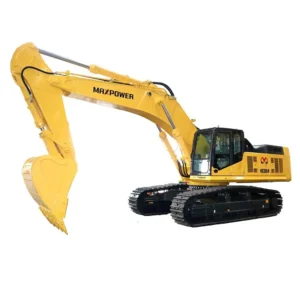

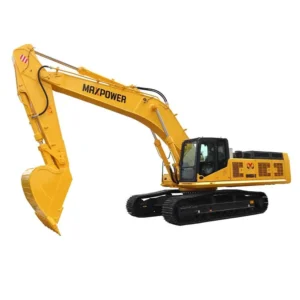
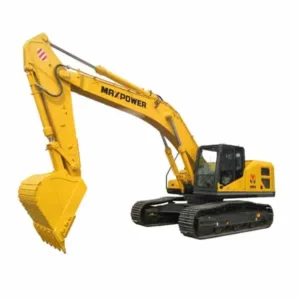
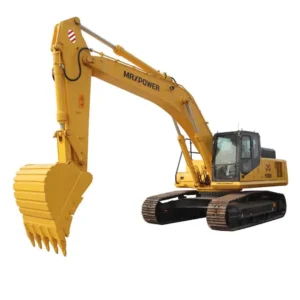
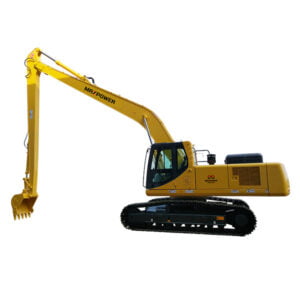
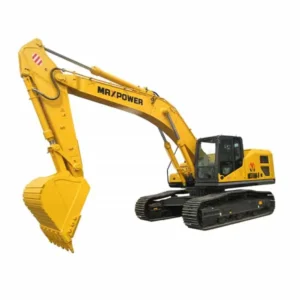






-150x150.webp)
